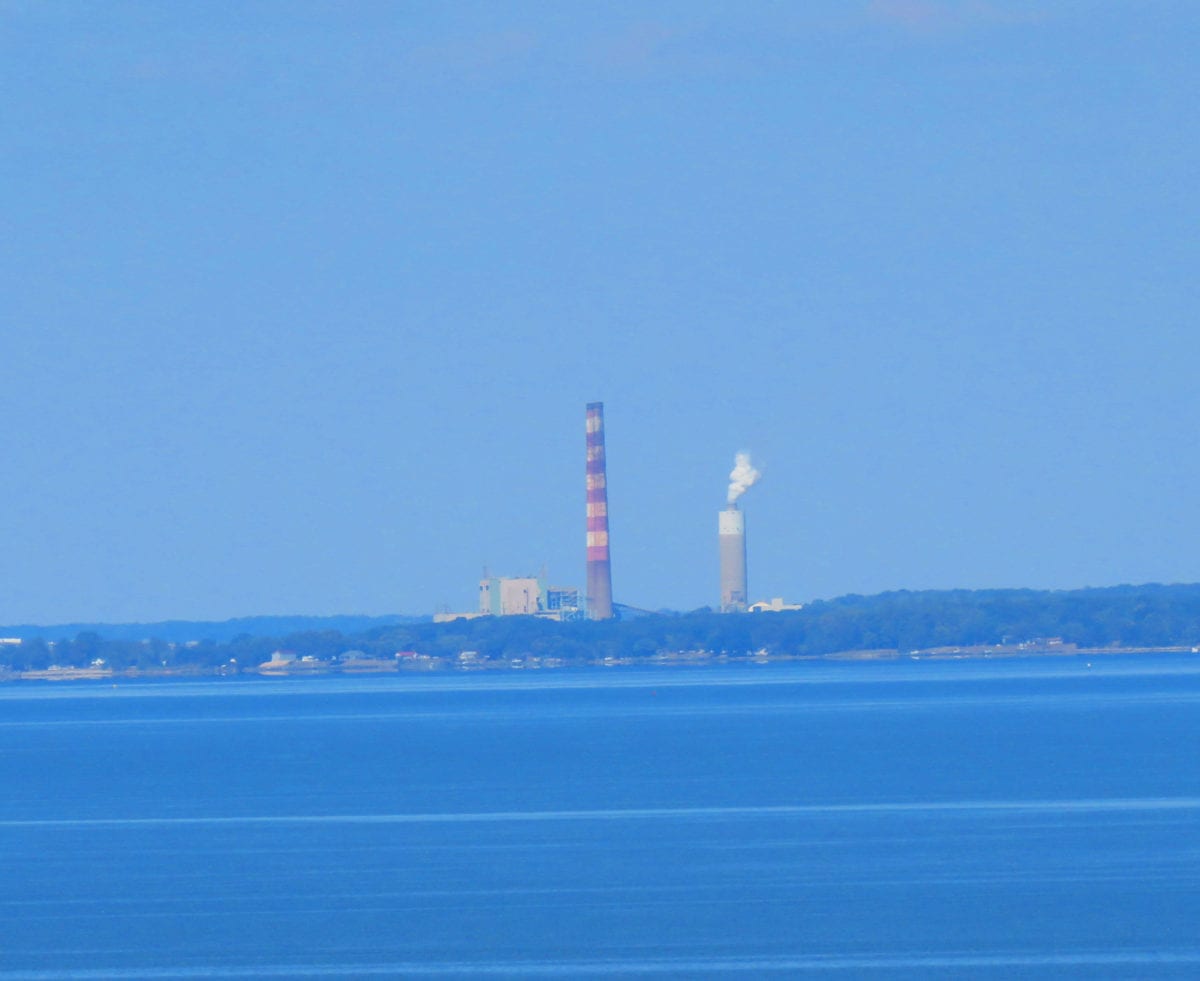
The Morgantown Generating Station, a coal-fired power plant in unincorporated Newburg, Maryland, near Morgantown on the Potomac River south of Washington, D.C.: Glynn Wilson
By Glynn Wilson –
WASHINGTON, D.C. – Maryland’s attorney general filed a motion in federal court on Tuesday joining 30 states and local governments in an attempt to intervene with the federal government to defend the Environmental Protection Agency’s authority to establish air emission limits on greenhouse gases from power plants and other industrial sources and stop the Trump administration from rolling back decades of regulations aimed at cleaning up air pollution, especially from coal-fired power plants.
A coalition of 22 states and 7 local governments announced a lawsuit against the EPA back in August to fight the Trump administration’s proposed new Affordable Clean Energy rule, which was crafted to virtually erase progress by the Obama administration’s Clean Power Plan.
Attorney General Brian E. Frosh was joined by a coalition of 30 states and local governments in filing the motion to intervene in the U.S. Court of Appeals for the District of Columbia Circuit.
The motion, filed in cases brought against EPA by several coal mining companies and other industry interests, is separate and distinct from the action the state and municipal coalition took to initiate its ongoing multi-state lawsuit against EPA over its roll-back of the Clean Power Plan. Passed by the Obama administration, it constituted the first-ever nationwide limits on one of the largest sources of pollution that causes climate change, existing fossil-fueled power plants.
“We are filing this action to stop coal companies and others from undermining the federal government’s authority to regulate greenhouse gas emissions,” Attorney General Frosh said in a statement announcing the court action. “Coal companies continue to seek to increase the emissions that foul our air and water, and heat up the planet.”
The Trump EPA’s proposed rule, the “Affordable Clean Energy” — called the “Dirty Power Plan” by opponents — will have virtually no impact on these emissions, Frosh said, prolonging the nation’s reliance on polluting, expensive coal power plants and obstructing progress of states toward clean, renewable and affordable electricity generation.
While the states in that lawsuit contend that the “Dirty Power Plan” rule change is unlawful and should be prevented from being implemented, the states do not contest that the EPA has the authority to limit greenhouse gas emissions from existing power plants, Frosh said.
“In fact, they challenge that it has the affirmative obligation to ensure that compliance with the Clean Air Act be based on the emissions reductions achievable through the ‘best system of emission reduction,'” he added.
Joining Attorney General Frosh in today’s motion to intervene were the Attorneys General of California, Colorado, Connecticut, Delaware, Hawaii, Illinois, Maine, Massachusetts, Michigan, Minnesota, New Jersey, New York, Nevada, New Mexico, North Carolina, Oregon, Pennsylvania, Rhode Island, Vermont, Virginia, Washington, and the District of Columbia, and the chief legal officers of Boulder, Chicago, Denver, Los Angeles, New York City, Philadelphia and South Miami.
Maryland had sued the EPA back in 2017 in an attempt to force federal regulators to crack down on upwind air pollution from five other states.
Republican Governor Larry Hogan had requested the legal action and Attorney Frosh filed the lawsuit with the U.S. District Court in Baltimore.
Maryland officials claim that power plants in Indiana, Kentucky, Ohio, Pennsylvania and West Virginia violate a “good-neighbor provision” of the U.S. Clean Air Act by not using their pollution-control technology daily during the summer months, when heat and sunshine speed up the creation of ozone gases.
Seventy percent of Maryland’s ozone pollution comes from upwind regions outside the state, Maryland officials say, contributing to respiratory illness and heart disease, and interfering with Maryland’s ability to meet federal air-quality standards.
Back in July of this year, a heat dome pressed down over Washington and other cities along the Eastern Seaboard and came with a suffocating invisible cloud of ozone, making it hard to breath in the city and the suburbs.
Ground level ozone, or bad ozone, is generated when nitrogen dioxide and nitric oxide pollutants from coal-fired power plants interact with heat and light from the sun. Oxygen atoms freed from nitrogen dioxide by the action of sunlight attack oxygen molecules to make ozone. Nitrogen oxide can combine with ozone to reform nitrogen dioxide.
Nitrogen dioxide and nitric oxide are referred to together as oxides of nitrogen (NOx), one of four main pollutants in power plant emissions that are responsible for adverse health effects in people along with carbon monoxide, sulfur dioxide and particulate matter, together sometimes referred to as smog.
These are the pollutants regulated by the Clean Air Act and federal and state rules, which the Trump administration wants to deregulate to favor profits for big-business, especially in the energy sector of the economy. Environmentalists say rolling back these regulations would be bad for business and human health, and reverse limited progress already achieved to fight climate change due to global warming from the burning of fossil fuels for energy.
Atmospheric ozone, or good ozone, is the layer above the Earth that protects life from the Sun’s ultraviolet (UV) radiation.













